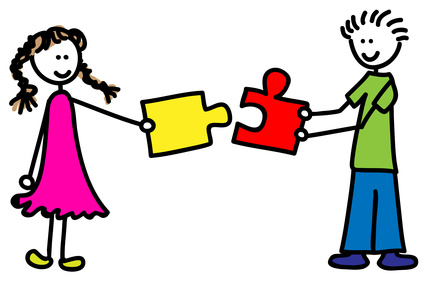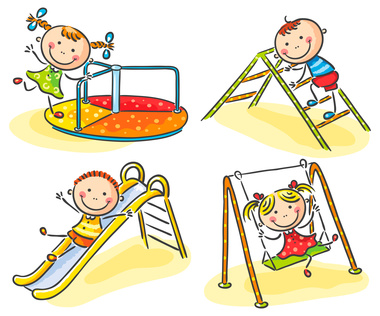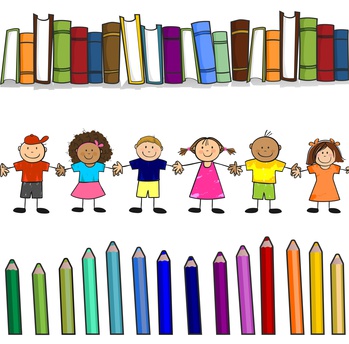Theories of Attachment
Attachment
What is attachment?
Attachment is a 'close emotional
relationship between two persons,
characterised by mutual affection and a
desire to maintain closeness'.
Shaffer (1993)
What are the key characteristics of attachment?
Infant seeks closeness to primary caregiver.
Infant experiences distress on separation.
Infant experiences pleasure when reunited.
Infant is aware of caregiver at all times and
frequently makes contact for reassurance.
Maccoby (1980)
How does attachment occur?
6 weeks - 3months - develop attraction to other humans by nestling, gurgling and smiling.
3 - 7 months - discriminate between familiar and unfamiliar people. Smiles more at familiar faces. Allows strangers to handle or look after them only if strangers give adequate care.
How does attachment occur?
7- 9 months - begin to develop specific
attachments. Actively trying to stay close to certain people (particularly the mother) and becoming distressed when separated from them. Also avoids closeness with strangers.
9 months - onwards - strong additional ties are form with other major caregivers including father, grandparents and siblings. Strongest attachment is with mother.
Why do infants seek attachment?
Immediate benefits
Helpless
Need food
Need protection
What are the benefits of attachment?
Provides base for emotional relationship.
It is a template for all future relationships (Hazan & Shaver 1987).
Enjoy close friendship later in childhood
(Grossman and Grossman 1991).
Develop good styles of parenting (Quinton et al 1984).
What are the explanation for attachment
According to the learning theory, infants form
attachment through classical conditioning.
Infants associate their caregivers with food
and security which rewards them with
gratification and satisfaction.
They learn that caregivers can satisfy their needs.
What is Freud 's theory of attachment?
According to Freud psychoanalytic account, infants become attached to their caregivers (usually the mother) because the caregiver satisfies all the infant's instinctual needs during feeding time (food, security, oral sexual gratification).
Criticism
Theories suggest that the infant bonds with the mother as she essentially satisfies the child's physiological needs (food). This concept is known as the 'cupboard love' theory.
Challenging the 'cupboard love' theories
The concepts of attachment being learnt or seen as an instinctual drive has been challenged by Harlow (1959).
Harlow (1959) study on rhesus monkeys demonstrates that the infant monkey have an unlearned need for comfort,
which is as basic as the need for food.
Further challenges
Later research by Harlow & Suomid (1970) showed that the attachment was even stronger when the cloth 'mother' had other qualities, such as rocking, being warm and feeding.
More challenges
Lorenz (1935) study showed that Goslings formed strong bonds with the first moving object they encounter.
Lorenz was followed by gosling which had imprinted on him soon after hatching.
(Imprinting recognising caregiver and staying close to them)
Imprinting occurs simply through perceiving
the caregiver without any feeding taking place.
Criticism
Harlow's (1959) study
Harlow & Suomi (1970) study
Lorenz study
Schaffer & Emerson's (1964) study of Scottish infants
Schaffer & Emerson's (1964) study
Researcher measured infants behaviour in different situations such as left alone in a room with baby sitter and put to bed at night by father
Findings: infants attached to people who did not perform caretaking activities (notably the father).
In 39% of the cases, the person who usually fed, bathed and changed the infant (typically the mother) was not the infants primary attachment figure.
Conclusion
Schaffer & Emerson's (1964) study of Scottish infants
Conclusion - features which predict
attachment are:
Person's responsiveness to the infant's behaviour
Person providing total amount of stimulation such as talking , touching and playing.
Imprinting occurs simply through perceiving the caregiver without any feeding taking place.
Check how much you have learned
Check how much you have learned
What is attachment?
How does attachment develop?
Why does attachment occur? Explain using the 'cupboard love' theories.
Provide arguments for and against the 'cupboard love' theories. Support your arguments with evidence from
research conducted by Harlow (1959/1970), Lorenz (1935), Schafer and Emerson (1964).
REFERENCES
Ainsworth et al (1978). Patterns of attachment: A psychological study of the strange situatuion. Hillside, NJ: Lawrence Earlbaum Associates IncBowlby, J (1944). Forty-four jevenile thieves: Their characters and home life. International Jounranl of Psycho-Analysis 25, 19-52 and 107-127
Bowlby, J (1951). Maternal care and mental health. Geeva, Switzerland: Worl Health Orgaisation.
Bowlby, J (1953). Child Care and growth of love. Harmondsworth, UK : Penguine
Bowlby, J (1969). Attachment of love, Vol1: Attachment. London : Hogarth
Bowlby, J. (1969). Attachment. New York: Basic Books. Bowlby, J (1988). A secure base: Clinical applications of attachment theory. London: Routledge.
Dollard J., & Miller, N. E. Personality and psychotherapy. New York: McGraw-Hill, 1950.
Freud, S. (1920) ?Infantile Sexuality? in On Metapsychology : The Penguin Freud Library Vol 7 London : Penguin Books 1977
Freud, S. (1923) ?The Ego and the Id? in On Sexuality : The Penguin Freud Library Vol 11 London : Penguin Books 1984 pp339-408
Freud, A. (1960), Discussion of Dr, John Bowlby?s paper. Psychoanalytic Study of the Child, 15,53-62.
Hodges, J., & Tizard, B. (1989). Social and family relationships of ex-instutional adolescents. Journal of child psychology and psychiatry, 30, 77-97 Harlow, H.F. (1959). Love in infant monkeys. Scientific American, 200, 68-74
Harlow, H. F. (1961). The development of affectional patterns in infant monkeys. In B. M. Foss (Ed,), Determinants of infant behaviour (pp. 75-97). London: Methuen.
Harlow, H. F., & Zimmermann, R. R. (1958). The development of affective responsiveness in infant monkeys. Proceedings of the American Philosophical Society, 102, 501 -509.
Hess, E.H., 1958. Imprinting in animals. publisher not identified.
Lamb, M. E. (1978). Qualitative aspects of mother-infant and father-infant attachments in the second year of life. Infant Behavior and Development, 1, 265-275.
Lorenz, K. Z. (1935). Der Kumpan in der Umwelt des Vogels (The companion in the bird?s world). Journal fur Ornithologie, 83, 137-213. (Abbreviated English translation published 1937 in Auk, 54, 245-273.)
Robertson, J. (1953a). A two-year-old goes to hospital (Film). Tavistock Child Development Research Unit, London (available through the Penn State Audiovisual Services, University Park, PA).
Robertson, J. (1953b). Some responses of young children to loss of maternal care. Nursing Care, 49, 382- 386.
Robertson, J. & Bowlby, J. (1952), Responses of young children to separation from their mothers. Courrier of the International Children?s Centre, Paris, II, 131-140.
Robertson, j., & Robertson , J. (1971). Young chuildren in brief separation. Psychoanalytic Study of the Child, 26, 264-315
Rutter, M. (1981) Maternal Deprivation Reassessed (Second edition) Harmondsworth : Penguin Books Schaffer, H, R., & Emerson, P. F. (1964). The development of social attachments in infancy. Monographs of the Society for Research in Child Development, 29 (Serial No. 94).
Tronick, E.Z., Morelli, G.A. and Ivey, P.K., 1992. The Efe forager infant and toddler's pattern of social relationships: Multiple and simultaneous. Developmental Psychology, 28(4), p.568-577
Tronick, E.Z., 1992. Introduction: Cross-cultural studies of development. Developmental Psychology, 28(4), p.566.
Additional reading:
Goldfarb, W. (1943). The effects of early institutional care on adolescent personality. Journal of Experimental Education, 14, 441-447.
Goldfarb, W. (1945). Psychological privation in infancy and subsequent adjustment. American Journal of Orthopsychiatry, 15, 247-255.
Greenberg, M. T., & Marvin, R. 5. (1979). Attachment patterns in profoundly deaf preschool children. Merrill-Palmer Quarterly, 25, 265-279
Greenberg, M. T., & Speltz, M. L. (1988). Attachment and the ontogeny of conduct problems. In 3. Belsky & T. Nezworski (Eds.), Clinical implications of attachment (pp. 177-218).
Grossmann, K. F., & Grossmann, K. (1990). The wider concept of attachment in cross-cultural research. Human Development, 13, 31 -47.
Kaplan, N. (1984). Internal representations of separation experiences in six-year-olds: Related to actual experiences of separation. Unpublished master?s thesis, University of California, Berkeley.
Klagsbrun, M., & Bowlby, J. (1976). Responses to separation from parents: A clinical test for young children.
Spitz, R. A. (1960). Discussion of Dr. John Bowlby?s paper. Psychoanalytic Study of the Child, 15, 85-208.
Freud, S. (1959). Inhibitions, symptoms and anxiety. In 3. Strachey (Ed. and Trans.), The standard edition of the complete psychological works of Sigmund Freud (Vol. 20, pp. 77-175). London: Hogarth Press. (Original work published 1926).
Freud, S. (1961). The ego and the id, In 3. Strachey (Ed. and Trans.), The standard edition of the complete psychological works of Sigmund Freud (Vol. 19, pp. 3- 66). London: Hogarth Press. (Original work published 1923).










